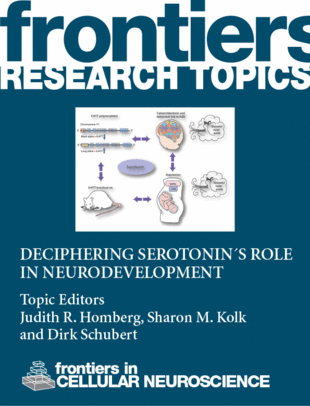暴露于沙林代神经毒剂后人类 iPSC 衍生神经网络活动的双相反应
IF 4.2
3区 医学
Q2 NEUROSCIENCES
引用次数: 0
摘要
有机磷神经毒剂(OPNA)是一种对平民有害的环境危害物质,历史上曾被用作化学战剂(CWA)。暴露于 OPNA 可导致多种神经、感觉和运动症状,这些症状可在日后表现为慢性神经疾病。要更好地了解 OPNA 暴露后大脑功能的变化,仍然需要大量的技术进步。与人类相关的体外多电极阵列(MEA)系统将 MEA 技术与人类干细胞技术相结合,有望监测 OPNA 暴露对大脑活动造成的急性、亚慢性和慢性后果。不过,该系统在评估 OPNA 对人类大脑功能的危害和风险方面的应用仍有待研究。在一项浓度-反应研究中,我们采用了与人类相关的 MEA 系统来监测和检测工程神经网络在沙林替代物 4-硝基苯基异丙基甲基膦酸盐(NIMP)浓度增加时的电活动变化。我们报告了暴露于低浓度(即 0.4 和 4 μM)和高浓度(即 40 和 100 μM)NIMP 的神经元的尖峰(但非爆发)活动的双相反应,这种反应是在暴露期间和暴露后 6 天内监测到的。无论 NIMP 的浓度如何,在网络水平上,神经元活动的交流或协调早在 NIMP 暴露后 60 分钟就开始下降,并持续到暴露后 24 小时。移除 NIMP 后,协调活动与对照组(0 μM NIMP)无异。有趣的是,只有在高浓度 NIMP 的情况下,网络水平的协调活动才会在暴露后 2 天再次开始减少,并持续到暴露后第 6 天。值得注意的是,细胞活力在暴露于 NIMP 期间或之后均未受到影响。此外,虽然在暴露于 NIMP 期间 AChE 的催化活性下降,但一旦移除 NIMP,其活性就会恢复。基因表达分析表明,人类 iPSC 衍生神经元和原代人类星形胶质细胞改变了与细胞与细胞外环境的相互作用、细胞内钙信号通路和炎症有关的基因,这可能有助于神经元在网络水平上的交流。本文章由计算机程序翻译,如有差异,请以英文原文为准。
Biphasic response of human iPSC-derived neural network activity following exposure to a sarin-surrogate nerve agent
Organophosphorus nerve agents (OPNA) are hazardous environmental exposures to the civilian population and have been historically weaponized as chemical warfare agents (CWA). OPNA exposure can lead to several neurological, sensory, and motor symptoms that can manifest into chronic neurological illnesses later in life. There is still a large need for technological advancement to better understand changes in brain function following OPNA exposure. The human-relevant in vitro multi-electrode array (MEA) system, which combines the MEA technology with human stem cell technology, has the potential to monitor the acute, sub-chronic, and chronic consequences of OPNA exposure on brain activity. However, the application of this system to assess OPNA hazards and risks to human brain function remains to be investigated. In a concentration-response study, we have employed a human-relevant MEA system to monitor and detect changes in the electrical activity of engineered neural networks to increasing concentrations of the sarin surrogate 4-nitrophenyl isopropyl methylphosphonate (NIMP). We report a biphasic response in the spiking (but not bursting) activity of neurons exposed to low (i.e., 0.4 and 4 μM) versus high concentrations (i.e., 40 and 100 μM) of NIMP, which was monitored during the exposure period and up to 6 days post-exposure. Regardless of the NIMP concentration, at a network level, communication or coordination of neuronal activity decreased as early as 60 min and persisted at 24 h of NIMP exposure. Once NIMP was removed, coordinated activity was no different than control (0 μM of NIMP). Interestingly, only in the high concentration of NIMP did coordination of activity at a network level begin to decrease again at 2 days post-exposure and persisted on day 6 post-exposure. Notably, cell viability was not affected during or after NIMP exposure. Also, while the catalytic activity of AChE decreased during NIMP exposure, its activity recovered once NIMP was removed. Gene expression analysis suggests that human iPSC-derived neurons and primary human astrocytes resulted in altered genes related to the cell’s interaction with the extracellular environment, its intracellular calcium signaling pathways, and inflammation, which could have contributed to how neurons communicated at a network level.
求助全文
通过发布文献求助,成功后即可免费获取论文全文。
去求助
来源期刊

Frontiers in Cellular Neuroscience
NEUROSCIENCES-
CiteScore
7.90
自引率
3.80%
发文量
627
审稿时长
6-12 weeks
期刊介绍:
Frontiers in Cellular Neuroscience is a leading journal in its field, publishing rigorously peer-reviewed research that advances our understanding of the cellular mechanisms underlying cell function in the nervous system across all species. Specialty Chief Editors Egidio D‘Angelo at the University of Pavia and Christian Hansel at the University of Chicago are supported by an outstanding Editorial Board of international researchers. This multidisciplinary open-access journal is at the forefront of disseminating and communicating scientific knowledge and impactful discoveries to researchers, academics, clinicians and the public worldwide.
 求助内容:
求助内容: 应助结果提醒方式:
应助结果提醒方式:


